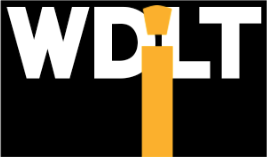Teaching is like cabinet-making!

Teaching, like cabinet-making, is a lot about…
tools
and how well they are
used
As I have shared with some of you, when given the chance, I love building furniture. The smell of fresh wood shavings, the satisfaction of taking a number of flat bits of timber and turning them into something useful, the challenge of creating something aesthetically beautiful, the joy of getting lost in the creative process.
As you begin to get lost in this process you soon come to realise the importance of good tools. A sharp saw. Fresh sandpaper. A straight rule. A solid workbench. A good broom. And sometimes, there are times when the design of the furniture has to be adjusted, simply because the right tool is not available.
Teaching is very similar. As teachers we have all sorts of tools available to us as we consider the creative process of leading students through their learning.
Sometimes we don't recognise some of the most impactful tools we have at our disposal. For example, the humble classroom desk. It is so much more than something just to sit at. Used effectively, the humble classroom desk can be used for behaviour management, social dynamics modification, assisting student focus, keeping students on task, etc. And when we consider that many of our students are using laptops, classroom desks and how they are arranged, become an even more powerful teaching/learning tool.
Laptops, textbooks, classroom desks, tone of voice, where we stand in the room when we speak, wall charts, music playing, images shown on the Smartboard, room temperature, what we wear, classroom routines, expectations we have of students, online classroom spaces - these are all TOOLS that we have at our disposal to influence the learning environment of our students.
One of the biggest challenges as a teacher is to know what tool to use, when to use it and then finally, how to use it most effectively. Not an easy task by any means! Professional Development for teachers, at it's heart, should be about expanding a teacher's repertoire of tools and then about refining that teacher's ability to use the right tool, in the right way, at the right time.
The research paper on 21st Century Teaching and Learning (which prompted this short article) highlights the use of digital tools in teaching, and the importance of learning digital skills (which I wholeheartedly agree with). At the same time, if I want to help a child learn how to add three and five, or the effect of static electricity, or how to throw a pot... a digital tool is not what I will be reaching for.
Famous psychologist, Abraham Maslow had a couple of words to say about tools.
"If you only have a hammer, you tend to see every problem as a nail."

